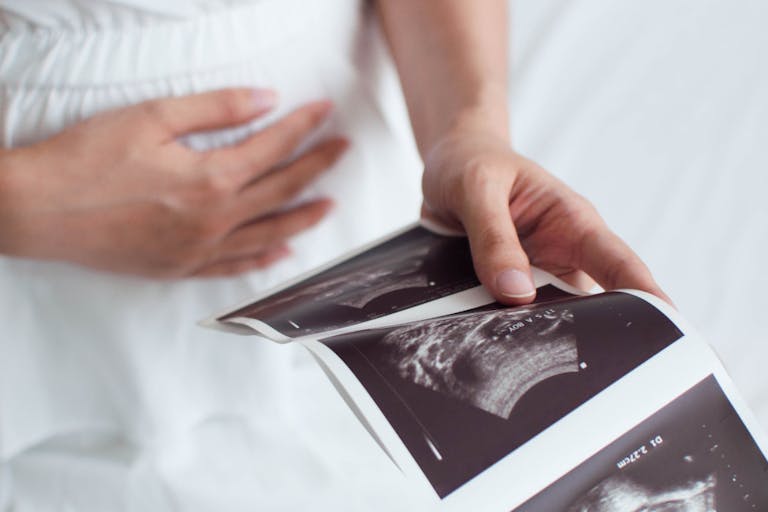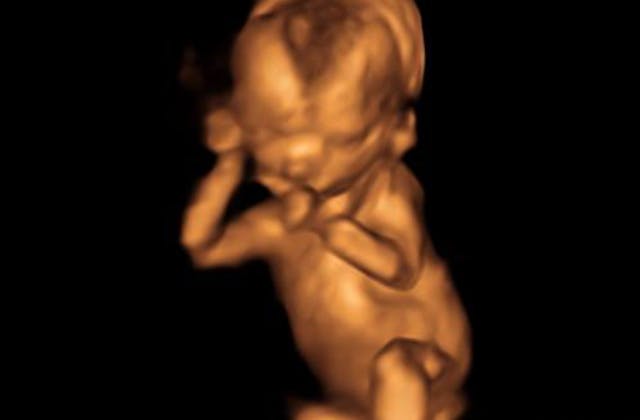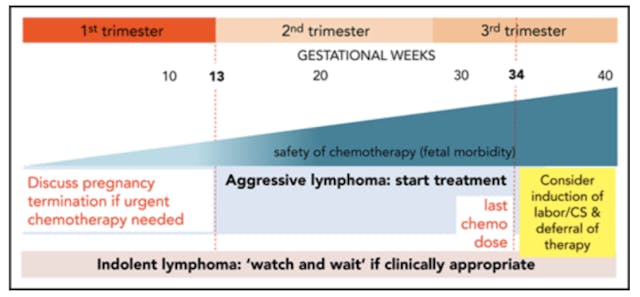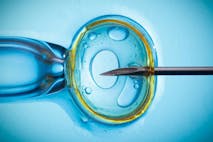
DOJ reverses Biden-era rule that allowed VA to commit abortions
Nancy Flanders
·
Doctors pressured pregnant mom with cancer to abort, despite what research reveals
A woman who was diagnosed with an aggressive form of cancer while pregnant chose to have a second-trimester abortion, presenting it as if this was the only option to save her life — but was it? Did doctors tell her the whole truth?
Sophia Yasin learned at 15 weeks pregnant that she had a rare form of cancer and would need to begin chemotherapy immediately.
Yasin was advised to abort, and doctors induced delivery of her baby girl, Kainaat, who was too young to survive.
Research has shown that chemotherapy is not harmful to the baby in the second and third trimesters of pregnancy, which begins at 13 weeks.
Sophia Yasin, 29, began experiencing vomiting, night sweats, and itchiness shortly after become pregnant in 2024. These symptoms were attributed to the pregnancy — but they turned out to be something else entirely.
“Everyone told me it was very normal in the first trimester and should ease up,” she told PEOPLE, adding, “I did have some worry, but I thought it was normal for my first pregnancy.”
But then, at the start of the second trimester, she collapsed while at work and was rushed to the hospital. Following scans and a biopsy, Yasin learned that she had pre-mediastinal large B-cell non-Hodgkin’s lymphoma, a cancer of the lymphatic system. According to The Yorkshire Post, she was 15 weeks pregnant.

“I remember saying, ‘What does this mean for the baby?’ I remember being numb,” Yasin said.
The tumor was growing quickly, and doctors advised immediate chemotherapy. She was told, however, that chemotherapy could cause harm or death to her baby.
Writing for PEOPLE, Toria Sheffield, said, “Sophia and her husband ultimately made the difficult decision to terminate the pregnancy based on the many medical variables at hand. While Sophia was devastated by the loss of her pregnancy, she also acknowledged that it may have saved her life.”
Yasin further explained, “Because I was pregnant, I was prioritized [within the health care system]. In a way, because I was pregnant, they found the cancer in time.” She added that she “was grieving a baby but trying to have treatment,” and that she “lost a lot in a short period of time.”
“I lost my hair, my baby and my old life.”
A pregnant patient with cancer would be prioritized in the health care system because there are two patients to consider. But in this case, it seemed the decision was made very quickly to let the baby die in order to potentially save her mother.
After six rounds of chemotherapy, Yasin was in remission, but Sheffield wrote that she has “not forgotten the baby she lost — a daughter whom she and her husband named Kainaat Pearl.”
She now fundraises for the nonprofit Lymphoma Action and said, “Every step we take is for Kainaat….”
It’s necessary to point out the blatant dehumanization tactics used by PEOPLE Magazine to refer to baby Kainaat as both a “pregnancy” when it came to the abortion but as Yasin’s “unborn daughter” when it came time to make readers feel sympathy for Kainaat’s death. It’s common for abortion supporters to refer to wanted preborn children as “babies” but to aborted babies as “pregnancies” in order to dehumanize them.
“Terminate the pregnancy” is far easier to accept and support than “terminate the baby,” but that’s exactly what happens in an abortion.
Article continues below
Dear Reader,
In 2026, Live Action is heading straight where the battle is fiercest: college campuses.
We have a bold initiative to establish 100 Live Action campus chapters within the next year, and your partnership will make it a success!
Your support today will help train and equip young leaders, bring Live Action’s educational content into academic environments, host on-campus events and debates, and empower students to challenge the pro-abortion status quo with truth and compassion.
Invest in pro-life grassroots outreach and cultural formation with your DOUBLED year-end gift!
According to The Yorkshire Post, Yasin was induced, giving birth to Kainaat while receiving her first dose of chemotherapy. Given Kainaat’s age, it is likely that she was not born alive.
“She was absolutely beautiful and very tiny,” said Yasin.
In medical emergencies, delivering a baby early to save the mother’s life is not considered an abortion because the intent is not to kill the baby. However, Yasin’s life does not appear to have been in immediate danger, and since she was in the second trimester, a different doctor may have approved chemotherapy without advising abortion for Kainaat.
Dr. Hector O. Chapa, F.A.C.O.G., an OBGYN, clinical associate professor, and Diplomate for the American Board of Obstetricians and Gynecologists, explained to Live Action News:
Many women are able to receive effective treatment while pregnant, with careful monitoring and adjustments to protect the baby. This position is endorsed by the American Cancer Society. It is crucial to have open and comprehensive discussions with a multidisciplinary healthcare team, including oncologists, obstetricians, and maternal-fetal medicine specialists, to explore all available options and create an individualized treatment plan that prioritizes the health of both mother and child.
He noted, “[S]tudies have shown that chemotherapy administered during the second and third trimesters (after 14 weeks) is generally considered safer for the fetus and does not significantly increase the risk of birth defects or stillbirths.”
He also explained that in order to give the baby the greatest chance of survival outside of the womb, doctors can carry out a delivery at 30-32 weeks of pregnancy, shortening the pregnancy to allow for cancer treatments without killing the baby.
Research published in the journal “Blood” supports this as well, showing that during the first trimester, a lymphoma diagnosis could trigger doctors to advise an abortion “if urgent chemotherapy [is] needed.” But after 13 weeks, research indicates that chemotherapy is safe for the developing child, with a consideration for induction of labor at or after 34 weeks. Yasin was 15 weeks pregnant when she was diagnosed.

In studies of women diagnosed with lymphoma, the majority carried their babies beyond 30 weeks, either undergoing cancer treatment during pregnancy or waiting to begin until after their babies were born. In one study of 39 patients, only three aborted their babies. And in a study of 90 patients, only six had abortions.
Researchers in the “Blood” study wrote, “The overarching goal… should be trying to take the pregnancy as close to the full term as possible, which was the goal in all the patients in our study.”
Babies born as early as 21 weeks have survived, and the odds of surviving a preterm birth as early as 22 weeks are increasing, according to new research.
Research has shown that chemotherapy is safe during the second trimester, and researchers have recorded stories of other women who underwent chemotherapy at a similar gestational age to Yasin and delivered healthy babies.
There does not appear to have been reason Yasin should have been told to abort her daughter in order to save herself. Women deserve to hear of life-affirming options and should not be encouraged to choose between their lives and their children’s lives.
Follow Live Action News on Facebook and Instagram for more pro-life news.
Live Action News is pro-life news and commentary from a pro-life perspective.
Contact editor@liveaction.org for questions, corrections, or if you are seeking permission to reprint any Live Action News content.
Guest Articles: To submit a guest article to Live Action News, email editor@liveaction.org with an attached Word document of 800-1000 words. Please also attach any photos relevant to your submission if applicable. If your submission is accepted for publication, you will be notified within three weeks. Guest articles are not compensated (see our Open License Agreement). Thank you for your interest in Live Action News!

Nancy Flanders
·
Analysis
Cassy Cooke
·
Analysis
Nancy Flanders
·
International
Angeline Tan
·
Pop Culture
Cassy Cooke
·
International
Cassy Cooke
·
Politics
Nancy Flanders
·
Human Interest
Nancy Flanders
·
Human Interest
Nancy Flanders
·
Analysis
Nancy Flanders
·
Politics
Nancy Flanders
·